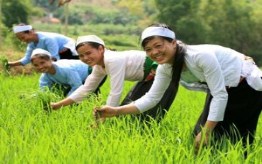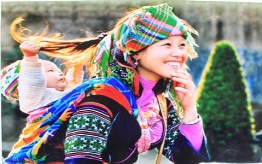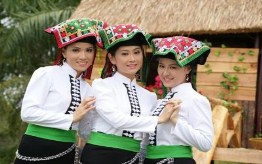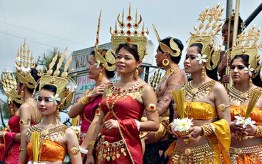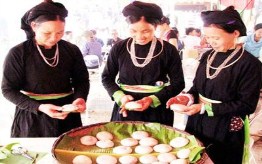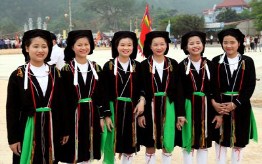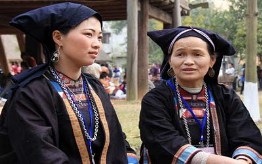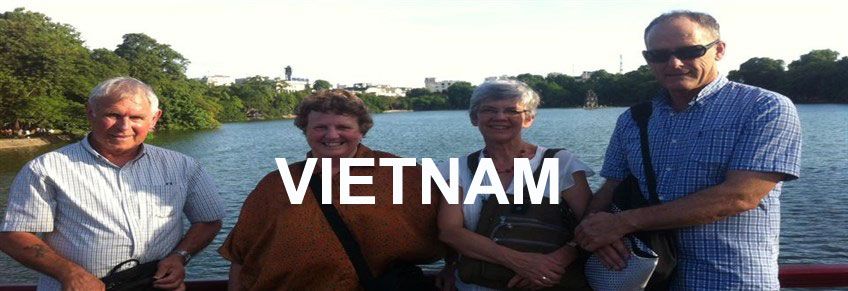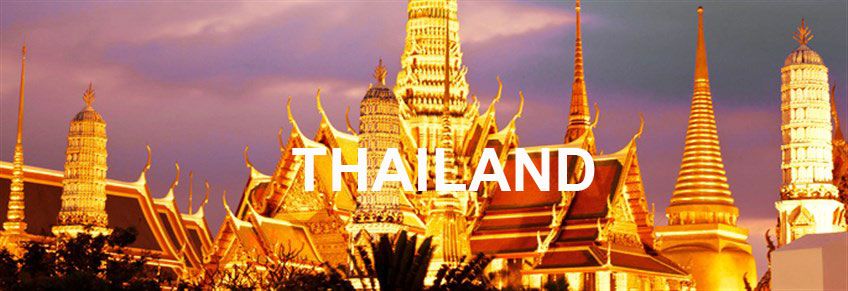With 800,000 inhabitants (1.3% of the Vietnamese population), Kho'mer occupies the second rank among the populous ethnic minorities in Vietnam. Being the tillers by nature, they skirted Mekong River to settle in Hau Giang, An Giang, Kien Giang, Dong Thap, Long An, Tay Ninh. They are descended from the ancient Kho'mer people with a famous civilization in the past. Their villages are often surrounded with pagodas and rows of palm-trees.
Ooc-om-boc Festival
Many festivals of the more than 50 ethnic minorities that live in Vietnam contain similarities of one kind or the other. Among those that retain a totally unique character is the Ooc-om-boc festival of the Khmers in Nam Bé (Cochinchina under the French domination). On the 15th day of the tenth month of the lunar year, all the Khmers living in about 600 villages scattered in this area gather to celebrate in unison the Ooc-om-boc festivities. The main activities in this festival are offerings made to the rabbit on the moon, the water procession and boat racing. The legend about the rabbit on the moon goes that the poor, but generous rabbit was asked for alms by the Genie Porac, disguised as an old man. Having nothing to offer the poor old man, the rabbit collected firewood in the forest and made a bonfire. Then he knelt before the old man and said, " As I have no food to offer you, please accept my humble meat and feed on it ". With these words, the rabbit jumped into the fire. Deeply moved by the rabbit's sacrifice, the genie used magic to extinguish the fire and save the rabbit. Then, turning to the moon in the sky, the genie said, "O Moon, please let everyone see clearly the shining example of benevolence and self-denial set by this little creature!". From then on, the legend says, people have always seen the rabbit on the tenth-month moon. Every year at harvest time, the Khmers make delicious cakes of young sticky rice which they believe the rabbit is partial to. The cake is also presented to the monks in the pagodas. The "water" procession follows.
As the cultivation of rice is the occupation of most Khmers, water is key to survival and regarded as a benediction of Heaven that brings wealth and happiness to the people. The "Ngo" boat procession is definitely the event of the festivities, and definitely the most spectacular. In Khmer dialectm, Ngo means a bow. Ngo boat is a canoe made out of the trunk of a sao tree, a precious tree widely grown in the Mekong delta region. The tree used for making canoes must be a very old one, often 50 metres long. As the boat is sacred, it must be made in the yard of a pagoda. It is adorned with motifs typical to the Khmer ethnicity, and mainly related to religious beliefs. The most common motif is the Naga. Prize-winning boats are preserved in pagodas and revered as objects of worship by the people. Those who have witnessed boat racing festivities in Vietnam from North to South concede that the Ngo boat racing is the most attractive. Each boat can hold as many as fifty athletes dressed in black or violet uniforms, including a head-dress or a cap. The captain of the team is seated at the bow of the canoe. Waving his hands like the conductor of an orchestra, he maintains the rowing rhythm of his boat. In the middle of the boat stands the "gia lang" (village elder), wearing a red head-dress. He beats the gong to encourage the rowers to proceed faster.
The Ooc-om-boc festivities, especially gio boat racing, attract people from all over western Nam Bé, not least the Viet. Art troupes fromHo Chi Minh City and the Central Highlands also come to take part in the festivities. In 1993, a festival of five-sound musical instruments was held on the occasion. It helped bring together to all the ethnic minorities living on this land legends of courage and benevolence, the two virtues they most revere.

